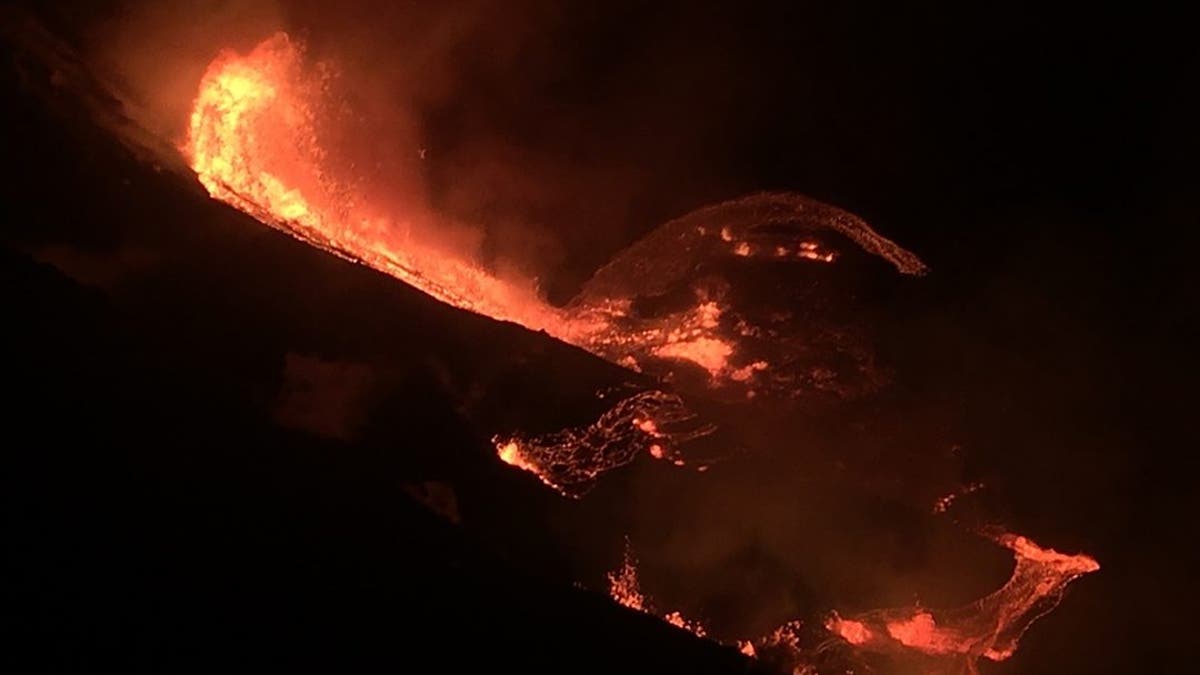Kilauea volcano erupts on Hawaii's Big Island
The Kilauea volcano on Hawaii’s Big Island erupted late on Sunday, December 20, the Hawaii Volcanoes National Park said.
Just days after the Kilauea volcano erupted on Hawaii's big island, the aftermath of the natural disaster is now forming a lava lake and can even be seen from space.
Lava was rising more than 3 feet per hour after the volcano erupted following a two-year break, scientists said on Tuesday. According to the U.S. Geological Survey, a lava lake, some 440 feet from the bottom of the crater, has formed, the Associated Press reported.

A plume rises near active fissures in the crater of Hawaii's Kilauea volcano on Monday, Dec. 21, 2020. (M. Patrick/U.S. Geological Survey via AP)
In addition, the volcanic plumes can be seen from space, with the USGS noting it can be seen from the International Space Station.
KILAUEA VOLCANO ERUPTS ON HAWAII'S BIG ISLAND
"It's a vog (volcanic fog) plume, formed by the steam and other volcanic gases being released from the volcano, the USGS Volcano account tweeted in response to a question.
Since its eruption on Dec. 20, Kilauea, one of the world's most active volcanoes, has jettisoned nearly 2 billion gallons of lava.

In this photo provided by the U.S. Geological Survey, lava flows within the Halema’uma’u crater of the Kilauea volcano Sunday, Dec. 20, 2020. The Kilauea volcano on Hawaii’s Big Island has erupted, the U.S. Geological Survey said. (U.S. Geological Survey via AP)
So far, Kilauea has not caused any property damage, unlike previous eruptions, including its most recent in 2018. In that eruption, it spewed enough lava to form a new island, Fox News previously reported.
That eruption resulted in the destruction of more than 700 homes.
VOLCANO ERUPTS ON HAWAII'S BIG ISLAND, DRAWS CROWDS TO PARK
Though Kilauea has erupted approximately 50 times over the past 100 years, that pales in comparison to its most active period, when it had a period of about 300 years of "explosive eruptions," the USGS said on its website.
CLICK HERE TO GET THE FOX NEWS APP
The Associated Press contributed to this story.

